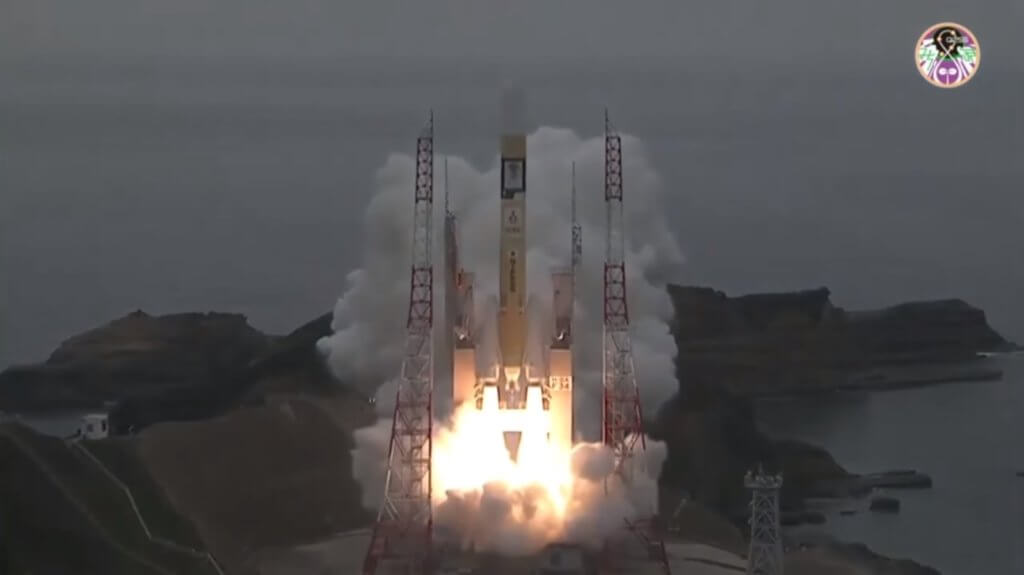At 0018 GMT on 1 June, a Japanese H-2A202 heavy-lift rocket lifted off from the Tanegashima Space Centre, Japan, carrying the MICHIBIKI-2 (QZS-2) spacecraft into an elliptical transfer orbit. The H-2A rocket flew in its “202” configuration utilising two SRB-A sold rocket boosters to boost performance. The MICHIBIKI-2 (QZS-2) satellite forms the second spacecraft of the Quasi-Zenith Satellite System (QZSS), developed by Japan to help assist the US GPS (Global Positioning System) network in providing accurate navigation signals over the heavily built-up Japanese urban areas.
The MICHIBIKI-2 spacecraft will soon move from its temporary transfer orbit to join its sister unit MICHIBIKI-1 – launched in 2010 – in their operational geosynchronous orbit (GSO) of 33,100 km x 38,500 km, inclined at 44 degrees from the equator. This orbit results in the spacecraft performing a “figure-of-eight” movement in the sky above Japan, and descending down over Australia. Due to the peculiarities of their orbits each QZS spacecraft will spend nearly eight hours directly above Japan each day.









